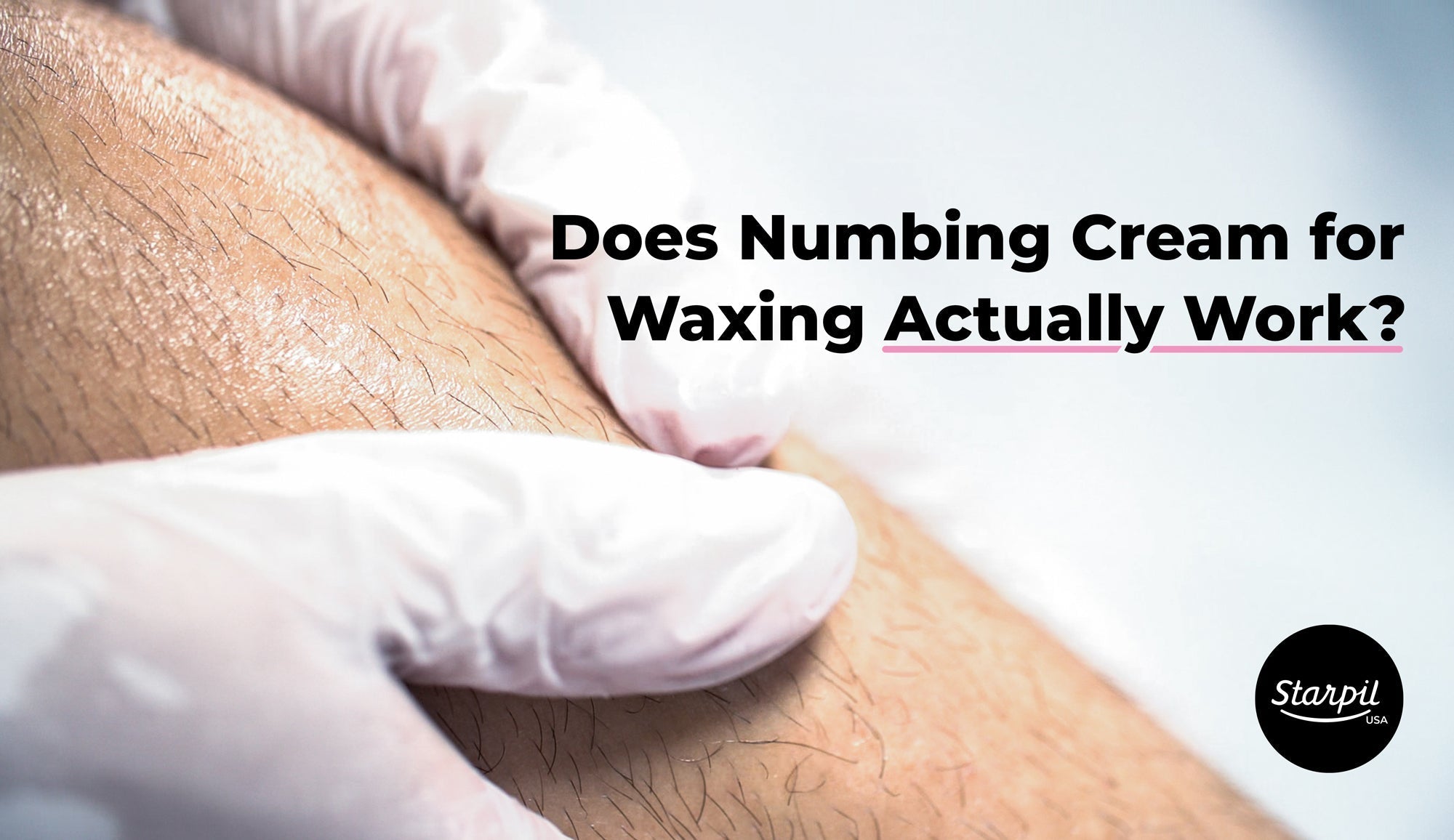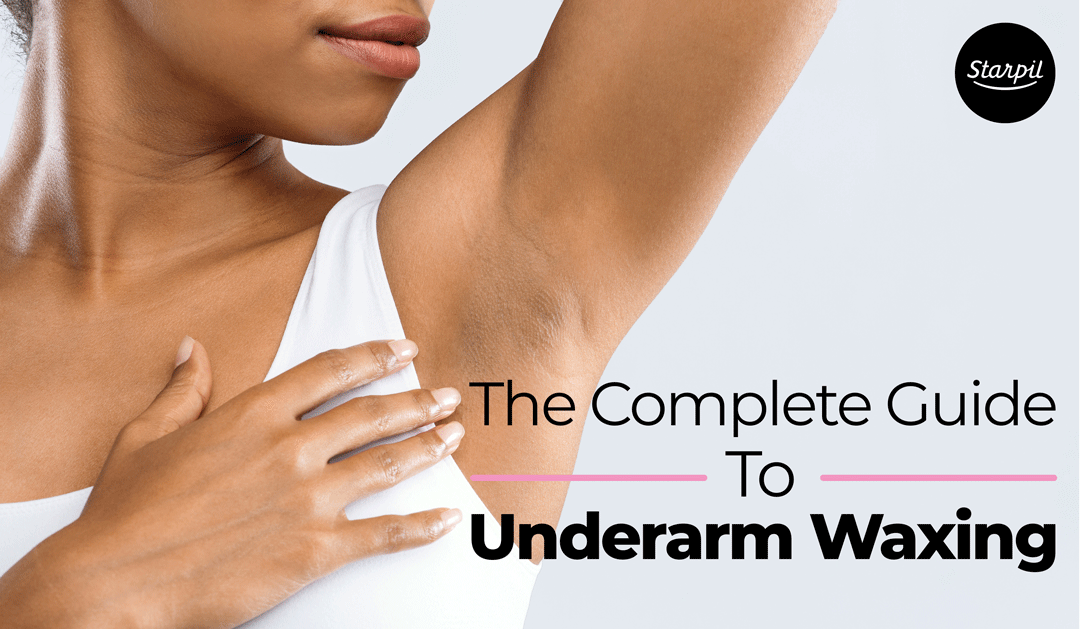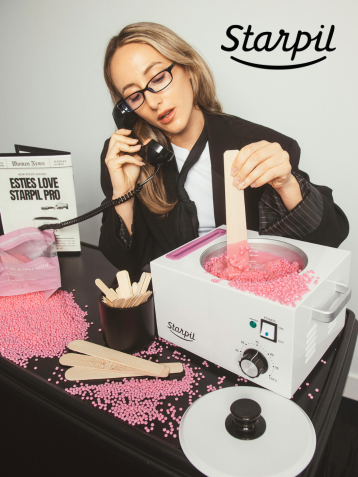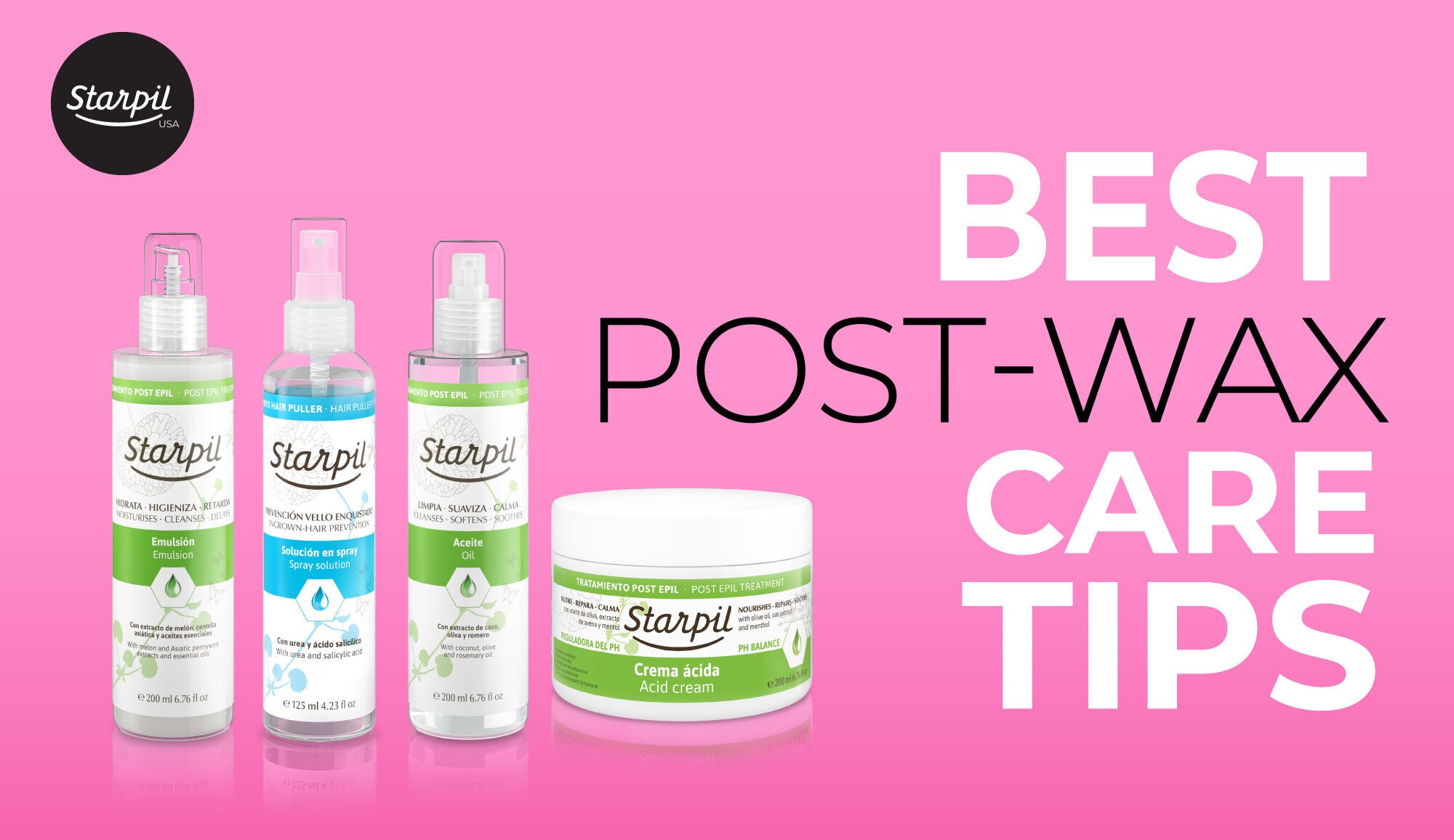Does Numbing Cream Work for Waxing?


When heading into a waxing service, you might consider how to dull the discomfort caused to some by the service. The first thing you might think of to combat this is to use numbing cream on your skin, but does numbing cream for waxing work?
Table of Contents
- What are Numbing Creams for Waxing?
- What Does Numbing Cream for Waxing Do?
- Where Can I Use Numbing Creams?
- Do Numbing Creams Work?
- How to Use to a Numbing Cream
- Alternatives to Numbing Creams
- Final Thoughts
- Does Numbing Cream Work for Waxing?| FAQs
If numbing cream for waxing does actually work, how do you go about using it for waxing? Are there alternatives to these creams that reduce pain without an extra step in your usual pre and post-wax routine?
If this is your first time waxing, or if you just want to learn more about your options to dull waxing pain, it can be tough to know where to start, or if the creams you’ve seen are even dependable. If you’re a professional looking for recommendations for your clients, you also don’t want to give advice that isn’t dependable. No matter what purpose you have in looking for numbing cream for waxing, we’ve explored the options for you so you don’t have to!
What are Numbing Creams for Waxing?
Numbing creams for waxing are topical creams or ointments meant to dull pain caused by waxing or other procedures, like tattooing, that can cause pain to the skin.
These creams use a variety of ingredients, including lidocaine, to numb or desensitize the skin in order to make it less susceptible to pain. Numbing creams are designed to make these procedures less painful while they’re being carried out, but will not replace any existing pre and post-wax routine you already have in place.
What Does Numbing Cream for Waxing Do?
Numbing cream for waxing numbs or dulls pain caused to skin by the removal of hair by the root. Depending on your pain tolerance, this process can be painful, since your hair is being removed swiftly and suddenly from the skin.
Numbing cream dulls this pain by breaking down the proteins in the hair follicles, which make it easier to remove hair without causing as much pain to the person receiving the service.
Where Can I Use Numbing Creams?
Numbing creams can be used all over the body, and can be applied to most of the areas that are going to be waxed. That being said, it’s not recommended for use on bikini areas, as such areas are especially delicate.
Additionally, it should not be used in internal areas, or be allowed to get too close to areas such as the inner ear, too close to the eyes or mouth, or in more internal intimate areas.
Are Numbing Creams Safe for Skin?
Generally speaking, yes, numbing creams are safe for skin. However, they should be used with discretion and caution, as some can have more downsides than benefits. It is possible to use these creams too much (quantity-wise) or too often, which can cause the cream to be absorbed into the skin and into the circulatory system or bloodstream through a process called ‘systemic absorption’.
Numbing creams are also not recommended for use while applying wax at home, as it may cause you to not be able to properly feel the heat from the wax on your skin, which can cause burns if not heated correctly. Experts say you should always be able to feel the heat of the wax on your skin. It’s recommended to only use numbing cream if seeing a professional esthetician, as they’ll be properly trained to make sure their wax is the optimal temperature for use, and you will be at reduced risk for accidentally getting burnt due to too-hot wax.
Additionally, make sure you’re aware of your skin type and sensitivity level before applying a numbing cream to your skin in case of an allergic reaction or irritation. If you’re aware of allergies to certain ingredients that are commonly found in numbing topical creams, make sure to fully research each ingredient in your cream to protect your skin and not unknowingly cause any reactions, rashes, or inflammation.
READ MORE: 5 Tips for How to Wax Sensitive Skin
Do Numbing Creams Work?
There are a lot of different types of numbing creams for waxing on the market, which are all made from different ingredients and have different makeups to provide numbing for clients. However, some are more effective than others, and some aren’t effective at all.
Some numbing creams are even reported by reviews to just be sticky and without any actual numbing properties, so make sure to do your proper research and read plenty of customer reviews prior to buying or investing in a numbing cream for waxing.
READ MORE: Waxing and Dry Skin
How Use to a Numbing Cream
To use a waxing numbing cream, simply apply the topical cream or ointment to the area you’ll be waxing around 20-30 minutes ahead of your waxing service and gently massage into skin using a clean cloth. This will give the cream long enough time to set in and provide the actual desensitizing feeling you’re looking for from the product. Don’t use your bare hands to massage this cream in, as it will also cause your fingers to be numb, which isn’t the feeling you want!
As we said prior, do not use a numbing cream on any internal or especially sensitive areas, as it is not safe for use in these areas, or can cause the cream to be absorbed into areas it shouldn’t.
READ MORE: Underarm Waxing: The Complete Guide
Alternatives to Numbing Creams
Now that we’ve determined why people use numbing creams for waxing, what these creams do, and how to use them, let’s discuss possible alternatives.
For those who have especially sensitive skin or who are prone to allergic reactions to topical ointments, it’s best to stay away from ingredients that might cause any rashes, irritation, or inflammation - especially when headed into a waxing service!
If you’re not sold on the idea of numbing creams for waxing or their effectiveness, there are plenty of alternatives to using numbing creams if you want to continue your waxing routine, but with a lower level of pain.
On top of routines directly involved in your service that can lower the pain you feel from waxing, you can also make some dietary choices or take preemptive measures to reduce pain. Taking an ibuprofen before your appointment and eating food rich in antioxidants can greatly help with keeping your body more fortified against waxing discomfort.
How to Reduce Pain During Waxing
The best way to have a less painful waxing experience or to lower pain during waxing is to make sure you’re practicing a proper pre and post-wax care routine, and that you’re using the right wax for your skin type and pain tolerance level.
If you have a low pain tolerance, making sure you’re going into a waxing service with the right care routine will help you to reduce your overall pain, and can even make your results last longer, so you can leave more time in between appointments.
Pre & Post-Wax Care Routines to Reduce Pain
As we said prior, having the right care routine is incredibly important in making sure your waxing service goes as smoothly and as painlessly as possible - and then you won’t even need numbing cream!
Prepping your skin prior to a waxing appointment with Starpil’s Original Pre-Wax Gel rids the skin of dead skin cells, cleanses and exfoliates before your service, which lowers the pain you may feel. When your skin is free of dirt and debris, there’s less to remove from pores, which allows the process to cause less discomfort. Making sure skin is deeply hydrated and moisturized ahead of service will also serve to reduce your pain.
Another great way to reduce waxing pain is by deeply moisturizing and hydrating skin after your process with Starpil’s Original Post-Wax Lotion and Post-Wax Oil. These items lock in moisture and repair skin following a wax, and set skin up for success for future services.
Before going into a wax in the first place, make sure you know your skin type and sensitivity levels. You might require a little extra care prior to your wax, and may need to practice additional steps to keep skin moisturized and healthy.
Best Waxes to Reduce Waxing Pain
In addition to having a consistent and dependable pre and post-wax skin care routine, making sure you’re using a wax type that’s ideal for your skin’s sensitivity levels or pain threshold is also key in reducing discomfort.
If you have a very low tolerance for pain or have hypersensitive skin that requires extra care to prepare for waxing services, the best wax formula for you is going to be Starpil’s Starsoft Hard Wax Microbeads.
This luxurious formula is a cult-favorite for its ultra-hydrating and moisturizing properties, and is the only neurosensory hard wax on the market! This allows you to get the amazing results you want to see from a wax, while having skin’s sensitivity dulled through the formula you’re using - and without the added step of using numbing cream!
Starsoft enables waxing regulars with low pain tolerances or very delicate skin to stay smooth and hair-free, without the discomfort that comes with the process.
Like Starsoft, Calendula is an amazing option for those with extra-sensitive skin. However, this formula takes things to another level by not just protecting from inflammation and irritation, but also guarding skin from ingrown hairs and breakouts.
For those with ultra-sensitive skin and low tolerances for pain, Calendula will give you the best possible results while remaining kind to sensitive skin types.
Another great option for those with sensitive skin and high sensitivity levels is our Pink Film Hard Wax.
This formula is amazing for use on even the most delicate areas or on sensitive skin, and remains gentle while gripping even the tiniest hairs from any area of the body.
READ MORE: Painless Hair Removal with Waxing: The Complete Guide
Final Thoughts
Overall, when researching numbing creams for waxing, what’s most important is making sure that whatever cream or formula you’re using is compatible with your skin type, sensitivity, and any possible allergies.
As always, we recommend seeing a professional esthetician for your waxing services, but emphasize this when using numbing cream. Your esthetician will not only be the one to properly advise you to use or not use the individual numbing cream you’ve chosen (or point you toward a specific formula to buy), but will also make sure you’re applying your cream correctly and that it’s in accordance with your skin’s needs. They’ll also of course make sure your waxing results are complete and to your satisfaction!
Bottom line, numbing cream isn’t necessary for everyone, and can even be ineffective for those who have low pain tolerances anyway. If you choose to use a numbing cream, make sure to shop around, consult your esthetician, and read plenty of customer reviews.
That being said, there are plenty of alternatives to numbing cream for waxing that can be integrated easily into your existing waxing routine. Practicing proper pre and post-wax care, having the right wax formula by your side, and giving your skin a little extra tender loving care will reduce your waxing pain, and may even provide you with less pain or discomfort for your appointments in the future.
Does Numbing Cream Work for Waxing? | FAQs
How effective are numbing creams for reducing pain during professional waxing services?
Numbing creams provide moderate pain reduction during waxing services rather than complete pain elimination, with effectiveness varying significantly based on several factors. Professionally formulated topical anesthetics containing lidocaine can reduce discomfort by approximately 30-50% when applied correctly. The effectiveness depends heavily on proper application timing; most lidocaine-based products require 20-30 minutes of contact time before reaching maximum numbing potential, with the effect lasting approximately 60-90 minutes afterward.
Waxing techniques and product quality also influence numbing cream efficacy. High-quality professional hard waxes like Starpil’s hard waxes naturally reduce discomfort. Clients should have realistic expectations about numbing cream capabilities, understanding that these products reduce rather than eliminate sensation, particularly for first-time waxing clients or those with naturally lower pain thresholds.
What are the potential risks and side effects of using numbing creams before waxing?
While numbing creams can enhance comfort during waxing, they present several potential risks and side effects that both professionals and clients should carefully consider. Allergic reactions represent a significant concern, ranging from mild irritation to severe reactions requiring medical intervention, particularly with benzocaine-based products, which have higher documented allergy rates than lidocaine formulations.
Skin barrier disruption can occur when numbing creams are applied to freshly exfoliated or compromised skin, potentially allowing excessive product absorption that increases both sensitivity and irritation risk.
Over-application poses serious health risks, when used on large body areas or under occlusive conditions (like plastic wrap), these products can potentially cause systemic absorption leading to serious cardiovascular or neurological complications in rare cases. Reduced protective sensation may cause clients to miss warning signs of excessive skin trauma during waxing, potentially resulting in lifting, tearing, or burns that might otherwise be prevented by normal pain responses.
Interactions with waxing products can occur when residual numbing cream interferes with wax adhesion, potentially leading to less effective hair removal and the need for repeated application that increases skin trauma.
What are the best numbing cream alternatives for waxing pain management?
Several effective alternatives to numbing creams can significantly reduce waxing discomfort without the potential risks associated with topical anesthetics. Non-pharmaceutical pain reduction begins with strategic timing; scheduling appointments for the week after menstruation when hormonal fluctuations typically reduce skin sensitivity for many clients.
Over-the-counter oral medications like ibuprofen or acetaminophen taken 30-45 minutes before appointments can reduce inflammatory responses and pain perception without affecting the waxing process or results. Specialized pre-wax products containing natural anti-inflammatory ingredients like tea tree or calendula create a soothing barrier that minimizes discomfort without interfering with wax adhesion.
Product selection significantly impacts pain levels. Using premium products like Starpil Starsoft Hard Wax removes hair effectively while reducing redness, pain, and inflammation. Applying pressure directly after waxing can also reduce pain.
How should numbing cream be properly applied before a waxing appointment?
Proper numbing cream application before waxing requires specific timing, technique, and preparation to maximize effectiveness while minimizing potential complications. Begin by thoroughly cleansing the treatment area with pre-wax gel to remove skincare products, natural oils, and residue that could create a barrier between the numbing cream and skin, reducing its effectiveness.
Apply the product 20-30 minutes before your scheduled appointment, understanding that application too early reduces effectiveness during the actual service, while application too late prevents the active ingredients from reaching full potency. Apply a thin layer and avoid using wrappings. Remove the product completely before the actual waxing service using mild soap and water, as residual numbing cream can interfere with wax adhesion and proper hair removal.
Inform your esthetician about your numbing cream use before they begin the service, allowing them to adjust their technique accordingly and monitor for any adverse reactions.
Can professional estheticians legally apply numbing cream before waxing services?
The legality of professional estheticians applying numbing creams before waxing varies significantly by location and product type, creating a complex regulatory landscape. In most US states, estheticians are limited to applying over-the-counter topical anesthetics containing 5% or less lidocaine.
Salon insurance policies often contain specific exclusions regarding topical anesthetic application, potentially leaving estheticians without coverage for claims arising from adverse reactions even when using permitted products. Estheticians may discuss numbing options but cannot physically apply the products, which must be self-applied by clients. Liability considerations significantly impact practice; even where legally permitted, many salons establish policies prohibiting staff from applying numbing products due to potential complications and associated liability concerns.
Many estheticians find that focusing on alternative comfort enhancement methods, including using high-quality professional waxes like Starpil or recommending taking over the counter pain medications prior to appointments.








